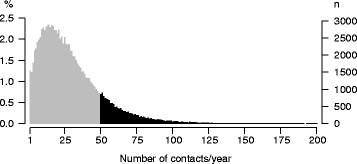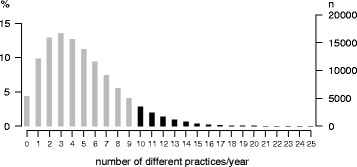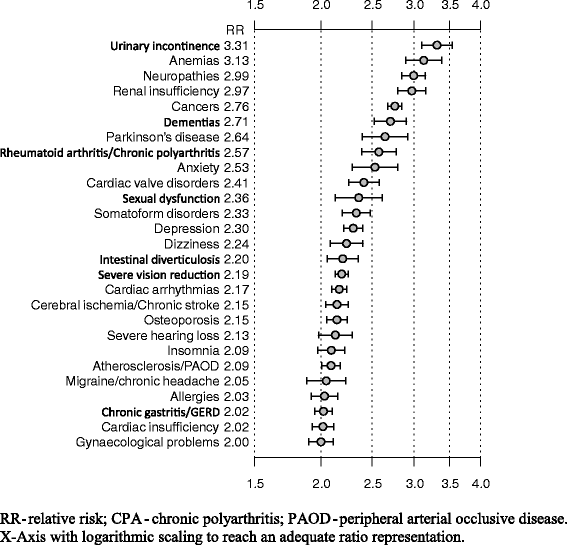Overutilization of ambulatory medical care in the elderly German population?--An empirical study based on national insurance claims data and a review of foreign studies
- PMID: 27074709
- PMCID: PMC4831189
- DOI: 10.1186/s12913-016-1357-y
Overutilization of ambulatory medical care in the elderly German population?--An empirical study based on national insurance claims data and a review of foreign studies
Abstract
Background: By definition, high utilizers receive a large proportion of medical services and produce relatively high costs. The authors report the results of a study on the utilization of ambulatory medical care by the elderly population in Germany in comparison to other OECD countries. Evidence points to an excessive utilization in Germany. It is important to document these utilization figures and compare them to those in other countries since the healthcare system in Germany stopped recording ambulatory healthcare utilization figures in 2008.
Methods: The study is based on the claims data of all insurants aged ≥ 65 of a statutory health insurance company in Germany (n = 123,224). Utilization was analyzed by the number of contacts with physicians in ambulatory medical care and by the number of different practices contacted over one year. Criteria for frequent attendance were ≥ 50 contacts with practices or contacts with ≥ 10 different practices or ≥ 3 practices of the same discipline per year. Descriptive statistical analysis and logistic regression were applied. Morbidity was analyzed by prevalence and relative risk for frequent attendance for 46 chronic diseases.
Results: Nineteen percent of the elderly were identified as high utilizers, corresponding to approximately 3.5 million elderly people in Germany. Two main types were identified. One type has many contacts with practices, belongs to the oldest age group, suffers from severe somatic diseases and multimorbidity, and/or is dependent on long-term care. The other type contacts large numbers of practices, consists of younger elderly who often suffer from psychiatric and/or psychosomatic complaints, and is less frequently multimorbid and/or nursing care dependent.
Conclusion: We found a very high rate of frequent attendance among the German elderly, which is unique among the OECD countries. Further research should clarify its reasons and if this degree of utilization is beneficial for elderly people.
Keywords: Elderly population; Frequent attenders; Health services utilization; High utilizers; Multimorbidity; Primary care.
Figures



References
-
- Grobe T, Dörning H, Schwartz F. GEK-Report ambulant-ärztliche Versorgung. St. Augustin: Asgard-Verlag; 2006.
Publication types
MeSH terms
LinkOut - more resources
Full Text Sources
Other Literature Sources

